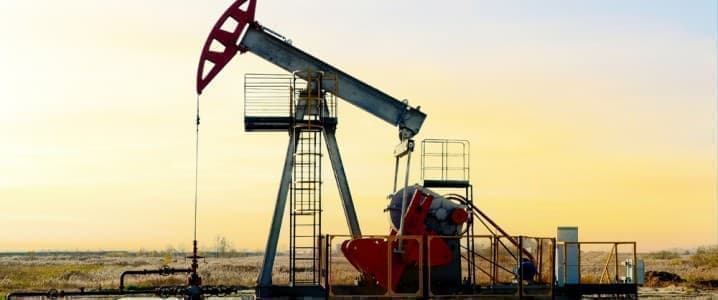While Canada has no clear aim to reduce its oil production, particularly as demand from the U.S. and other countries has risen since the Russian invasion of Ukraine, it is now hoping to decarbonize the sector to ensure its future prospects. With greater international pressure to curb fossil fuel production and decarbonize, Canada is aiming to introduce innovative technologies that will allow it to continue producing crude without having such a heavy toll on the environment. A recent Canadian Energy Regulator (CER) report showed that Canada’s bitumen production from oil sands achieved a record high of 3.5 billion bpd last October. Bitumen is an extremely viscous oil that requires a high level of processing to convert it into crude for use in refineries. This typically makes production very carbon-intensive. Canada’s oil output is expected to be even higher this year as it has agreed to increase output in response to the global energy crisis.
The U.S. asked Canada to increase its oil output following the Russian invasion of Ukraine and subsequent sanctions imposed on Russian energy. The request came from the Biden Administration as the U.S. faced energy shortages and rapidly rising oil prices. However, many viewed this as contradictory, coming from a government that halted works on a major connecting pipeline – Keystone XL – and put other restrictions on Canada’s oil industry expansion.
Despite its reluctance to meet fickle U.S. demands, Canada is backing its oil industry in a big way and agreed to boost production. In March, crude oil and equivalent product production levels increased by 2.3 percent to 24.2 million cubic meters. This came at a time when North American benchmark West Texas Intermediate crude prices rose by 60 percent from the beginning of the year to reach $122 a barrel.
But as Canada’s oil industry sees improvements, the country’s Prime Minister Justin Trudeau is pushing for greater decarbonization aims, adamant that Canada will not fall behind other states in its carbon-cutting efforts. Due to the heavy nature of its crude, Canada produces some of the world’s most carbon-intensive oil. Therefore, if Canada hopes to meet its 40 to 45 percent carbon reduction target by 2030, and net zero by 2050, the oil and gas industry must also reduce its carbon emissions by at least 45 percent by the end of the decade, according to estimates. This means an annual reduction of 103 million tonnes from 2019 levels.
The Canadian government is in the process of developing stricter standards on new oil and gas operations to support the country’s decarbonization efforts. New production would undergo a federal impact assessment and will need to meet higher standards, with best-in-class emissions standards per barrel of oil or cubic meter of natural gas produced. In addition, the standards stipulate that all future oil and gas projects must be net-zero by 2050.
Any new oil operations would have to demonstrate that the project integrates advanced technologies and best environmental practices (BEPs) - including emerging technologies. They would have to minimize emissions and compare the project’s emissions with high-performing projects around the world. Finally, they would have to develop a plan to achieve net-zero emissions by 2050 if the project is to continue to operate after that date. This would support Canada’s emissions capping goal for the next three decades.
In addition to traditional decarbonization techniques, such as incorporating carbon capture and storage technology into operations, Canada is eying innovative solutions to its carbon-heavy oil production. Small nuclear reactors could be the answer to Canada’s dirty oil problem. As the world opens its doors to nuclear power once again, new small modular reactors (SMR) could be used in oil operations instead of natural gas to reduce emissions.
Related: The Global Gas Crisis Is Spilling Into The United States
Energy companies are now looking into the potential of installing SMRs in oil sands projects across Alberta. John Gorman, the president and CEO of the Canadian Nuclear Association, explains: “without a doubt, the oilsands is the biggest market for small modular reactors in Canada," adding, “It's something that some companies are very actively looking at.”
SMRs are smaller than traditional nuclear reactors, typically producing between 10 and 300 MW of energy. They can be built in factories rather than on-site and are scalable. At present, the technology is not commercially available, but many countries around the world are investing heavily in the research and development of SMRs. The International Atomic Energy Agency expects around 100 SMRs to be in operation worldwide by 2030. And four Canadian provinces - New Brunswick, Ontario, Saskatchewan, and Alberta - have already agreed to support this development.
SMRs have the potential to reduce Canada’s carbon emissions not only by delivering clean energy to small electricity grids but also by providing the heat needed for fossil fuel industries, such as oil sands. Producers use large quantities of high-temperature heat sources to make the steam required to extract bitumen from sand, typically using natural gas to do so. At present, Canada’s oil sands industry uses around 30 percent of the country’s total natural gas consumption, showing the huge potential for improvement.
As Canada continues to back its oil production, particularly in response to the recent boost in global demand, the government is pushing the sector to decarbonize. While traditional carbon-cutting techniques are expected to be incorporated across many oil operations, innovative new technologies such as SMRs present the opportunity to move away from natural gas and decarbonize further.
By Felicity Bradstock for Oilprice.com
More Top Reads From Oilprice.com:
- Energy Independence Will Not Solve The Global Gas Crunch
- Russia Is Now Producing LNG Near The Shuttered Nord Stream Pipeline
- “Lehman Event” Looms For Europe As Energy Companies Face $1.5T In Margin Calls


















